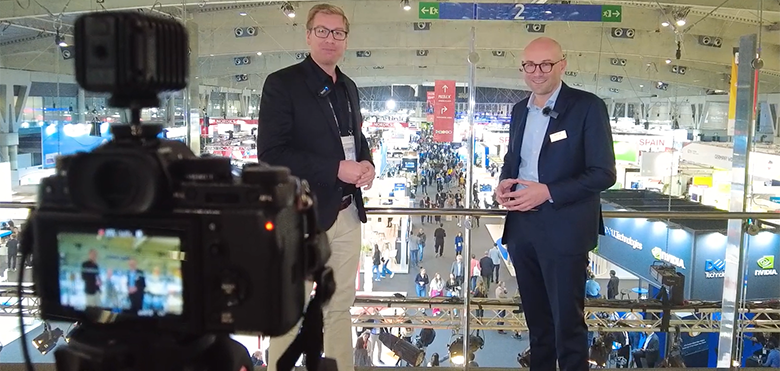Reflections on Smart City Expo World Congress 2022
My colleagues and I recently returned to Smart City Expo World Congress 2022 in Barcelona, one of the world’s leading exhibitions, and a global hub for knowledge sharing amongst those who work to create smarter and more liveable cities. With the increasing demand we see for video analytics in city infrastructure, we were keen to discuss the latest technologies and solutions.
Two years on from the peak of the pandemic, Smart City Expo World Congress had a great turnout, with many people returning to the event. The exhibition saw +20,000 visitors from 146 countries, with decision makers from over 700 cities, in attendance. It was a fantastic opportunity to meet and engage with partners, exhibitors, and city leaders in person.
This year we were pleased to see around 15 of our closest partners in EMEA showcase a broad range of Axis-based technology solutions for city management. From safety and security to weather monitoring and traffic control, the partners demonstrated a real breadth of technology-enabled solutions, and, most importantly, the value they provide to cities and their inhabitants.
We also got the opportunity to visit cities from all over the world in their booths and hear more about some of the most important challenges and needs that they see today.
Two clear trends emerged when speaking to cities was around the use of computer vision, data and analytics in cities: to optimize urban mobility and improve environmental impact. Many talked about the future of digital twin cities, whereby a virtual model or map of the city is created to support decision makers with planning and management. Others also outlined the importance of helping cities meet their sustainable development goals, whether using air quality sensors to determine pollution levels, or deploying analytics to detect risk of flooding or wildfire.
Overall, one of our key takeaways from the Expo was the use of integrated technology in cities: city planners can really maximize their capabilities by integrating different, complementary technologies in one system. Whether that’s the combination of AI, object tracking, and cameras to manage vehicle and pedestrian flow or the integration of license plate recognition with video to enable traffic control, it’s clear that integrating technology and relying on surveillance cameras as key sensors are fundamental to smart cities both now and in future.
Andrea Sorri, Segment Development Manager, Cities took the opportunity to speak to partners using Axis technology at the event, and find out more about their latest solutions. You can find out more in the videos below.
|
|
Genetec outlines the benefits of unifying data from video, sensors, and analytics to augment the information available for city planners. |
|
|
Milestone describes how its integration with Axis simplifies the functionality and features of its platform for city end-users and system integrators. |
|
|
A discussion on the use cases for Briefcam technology, and how it helps city planning to enhance city services while improving safety for citizens. |
|
|
Vaisala explores the potential to combine weather and air quality measurement with Axis cameras to visualize and detect adverse weather conditions or monitor pollution levels. |
|
|
A visualization of how Snap4City’s “digital twin” of the city can enable decision makers to plan and solve problems in real-time. |
|
|
Sprinx outlines how the coexistence of vehicles, bicycles and pedestrians, and their flow through a city, can be facilitated through AI, cameras and direction detection. |
|
|
Andreas Göransson discusses the evolution from surveillance camera to IoT sensor, exploring how the latest technology with deep learning analytics on the edge is enabling cities to benefit from camera-sourced data. |
|
|
Andrea Sorri points to the advances in camera technology, and the use of metadata alongside video to inform smart city platforms. |




